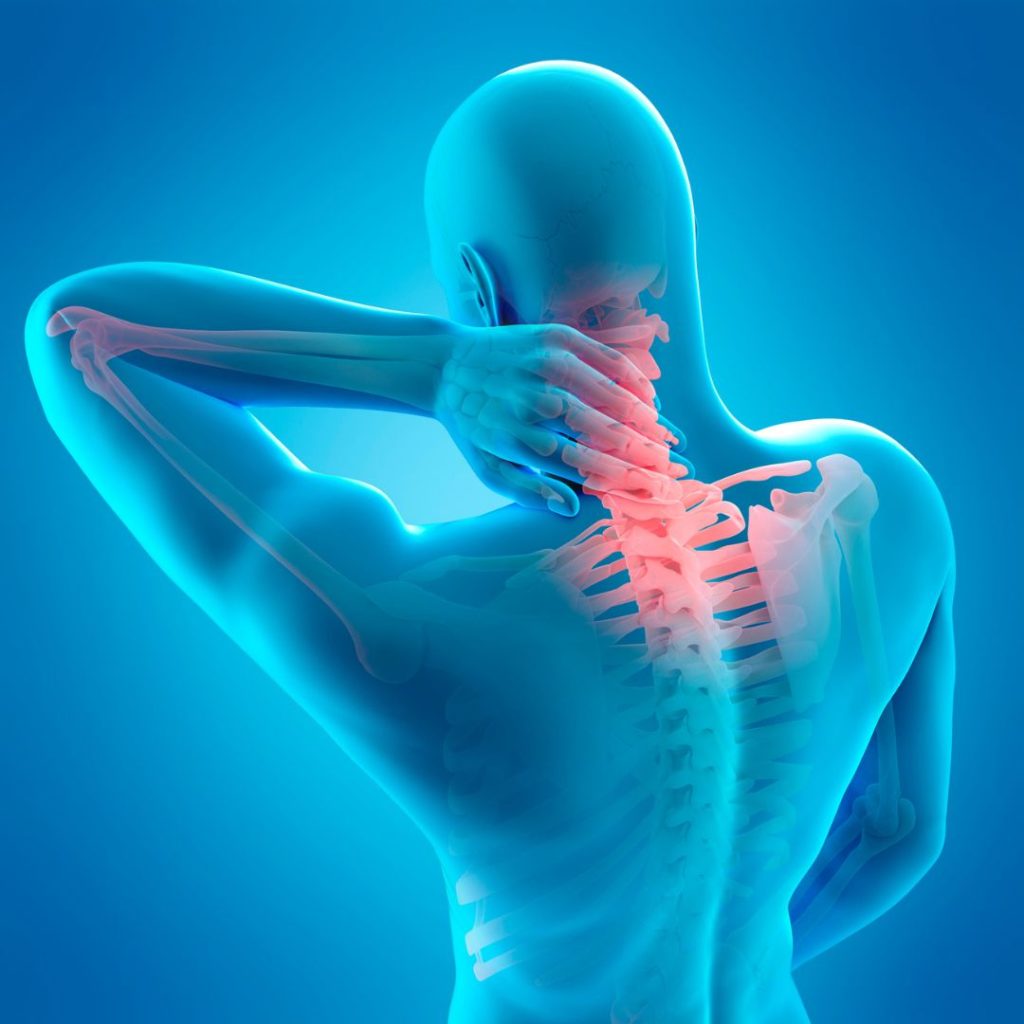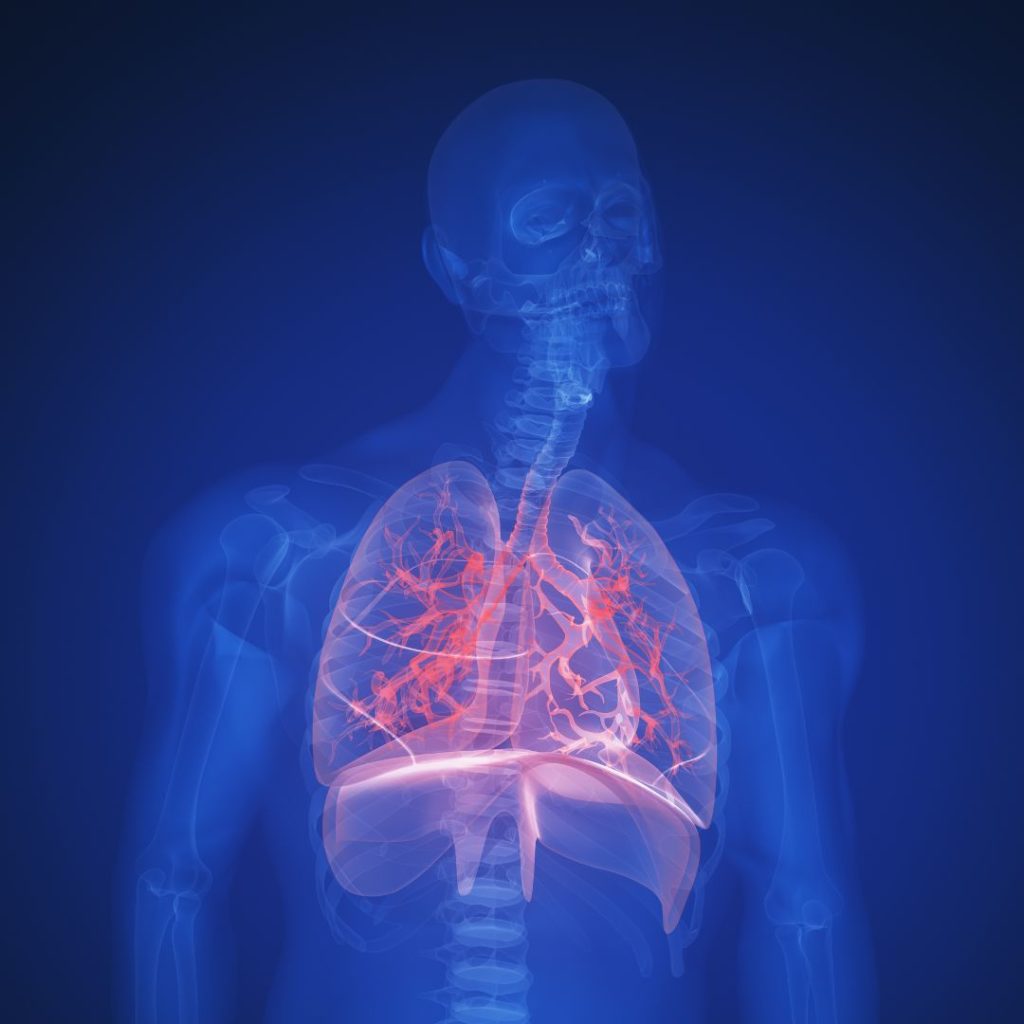The Link Between Neck Pain and Respiratory Issues
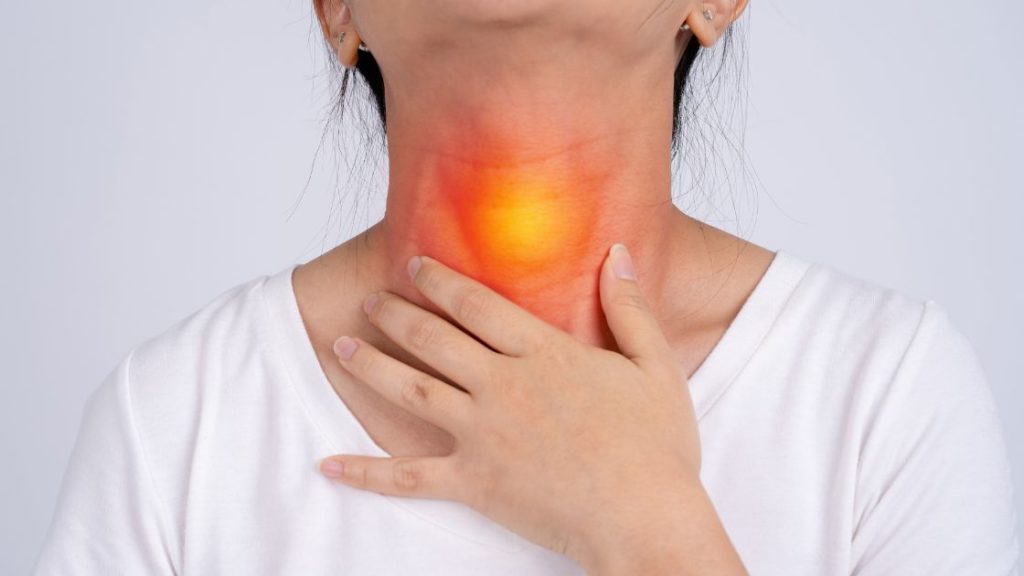
Neck pain is one of the most, if not the very most, reported musculoskeletal issues we encounter here at Moyer Total Wellness.
Chronic neck discomfort isn’t just painful for your muscles and limiting for your joints. Did you know that there is a correlation between that all too common sore neck and respiratory problems?
Why is this? And what is the best way to treat neck pain and prevent respiratory dysfunction?
Why Neck Pain is Linked to Respiratory Conditions
Patients with chronic neck pain, or neck pain lasting more than three months, present with tightened deep neck flexors, decreased muscular strength in neck extensors, as well as fatigue in the superficial neck flexors. These issues lead to forward head posture and reduced joint range of motion.
But how does this increase one’s risk for respiratory conditions?
Forward head posture, the root of seemingly all musculoskeletal conditions, causes muscular imbalance and segmental instability; both of which are linked to alterations in the thoracic spine and decreased thoracic mobility. These changes restrict rib expansion, which in turn can decrease lung volume and therefore obstruct breathing.
Neck Pain Treatment for Respiratory Health
What is the best way to address neck pain before it puts one at risk for obstructed breathing?
The first step is identifying the factors that increase risk for breathing difficulties, which were listed at the beginning of the previous section. The deep neck flexors are locked short, and neck extensors are locked long, the superficial neck flexors are easily fatigued. Posture is negatively impacted, with the head hanging forward, and the neck is incapable of performing full range of motion.
In order to treat the neck pain, the tight contracted muscles need their knots removed before any strengthening or joint mobilization exercises are applied. The deep neck flexor muscle group includes the rectus capitis anterior, rectus capitis lateralis, longus capitis, and longus colli; the muscles that are in this case knotted and need to be loosened. Go to the 4:56 time stamp of the video below to get a clear image of these specific muscles.
Knot removal from the deep neck flexors can be achieved through deep tissue massage, myofascial release therapy, and heat therapy.
The fatigued superficial neck flexors, which are the sternocleidomastoid and scalenes, also require knot removal before moving onto the next step. Since deep tissue massage begins with treatment of superficial muscles before sinking into the deeper ones, it makes sense to loosen the sternocleidomastoid and scalenes at the start of the bodywork session.
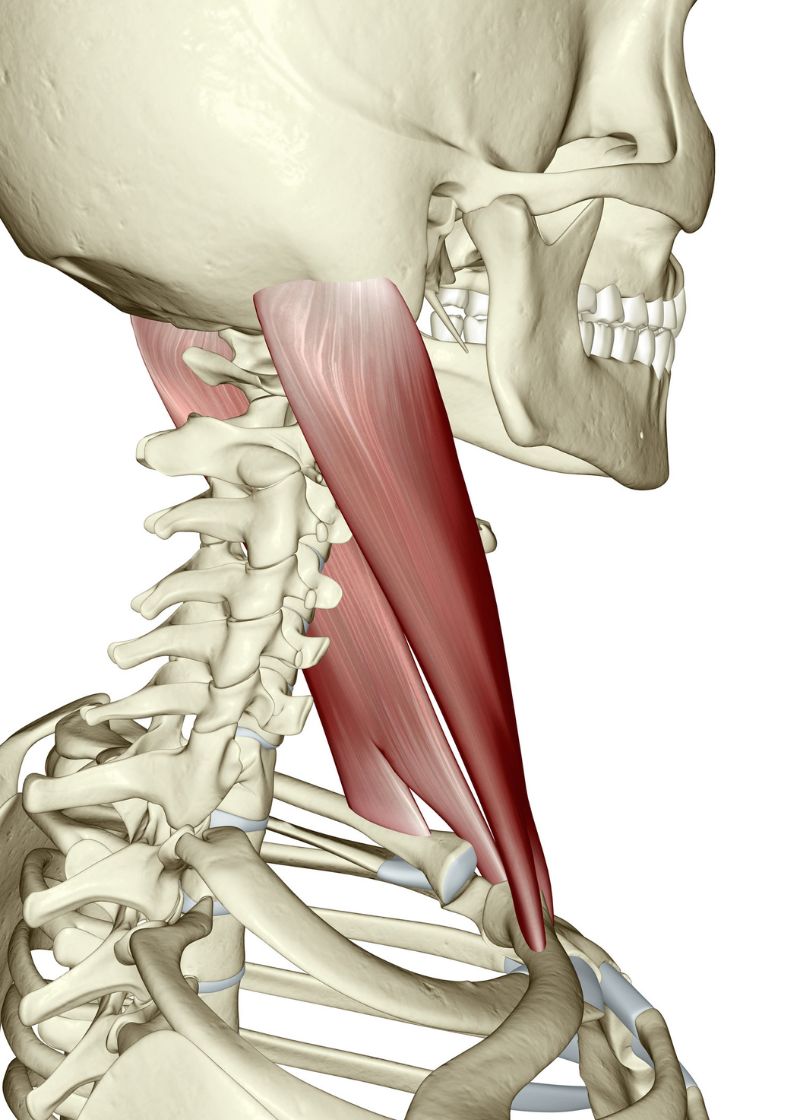
Sternocleidomastoid
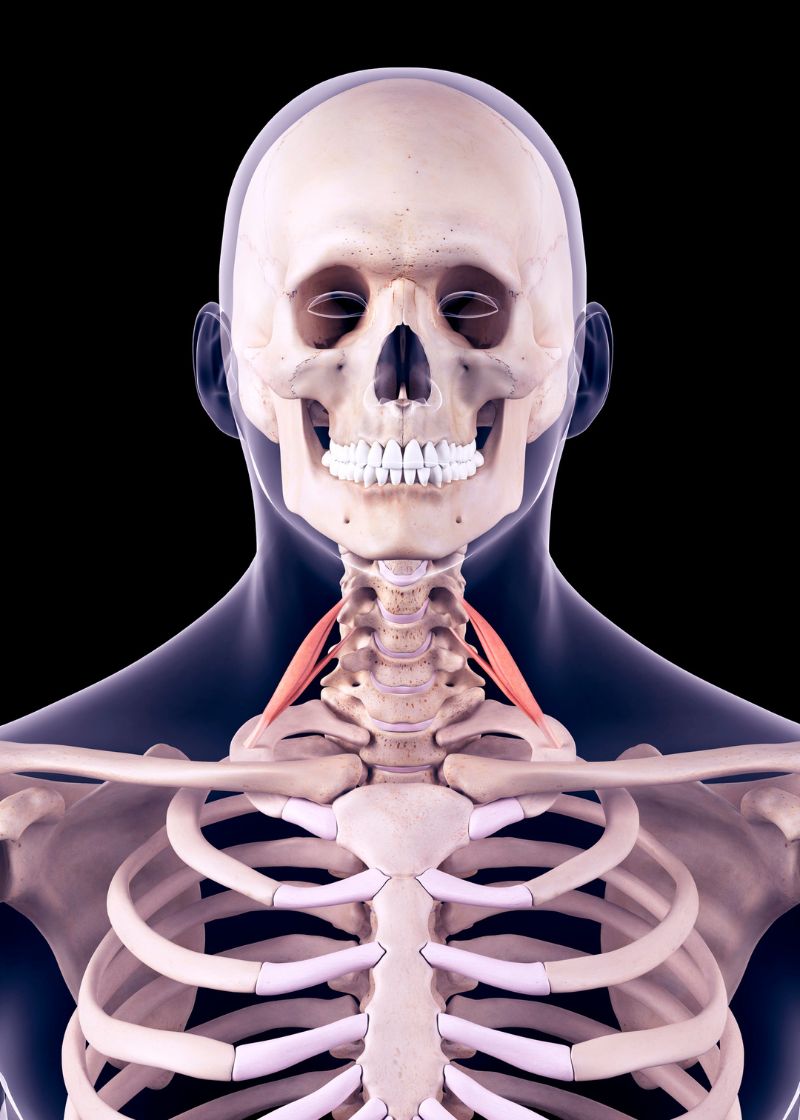
Scalenes
After removing knots from the superficial and deep neck flexors, the neck extensors will be more responsive to strengthening exercises. The neck extensors, which include the splenius capitis and splenius cervicis muscles, can be strengthened through an assisted stretching technique called proprioceptive neuromuscular facilitation, more commonly known as PNF. The PNF stretches can also be applied to the newly loosened neck flexors to encourage them to lengthen.
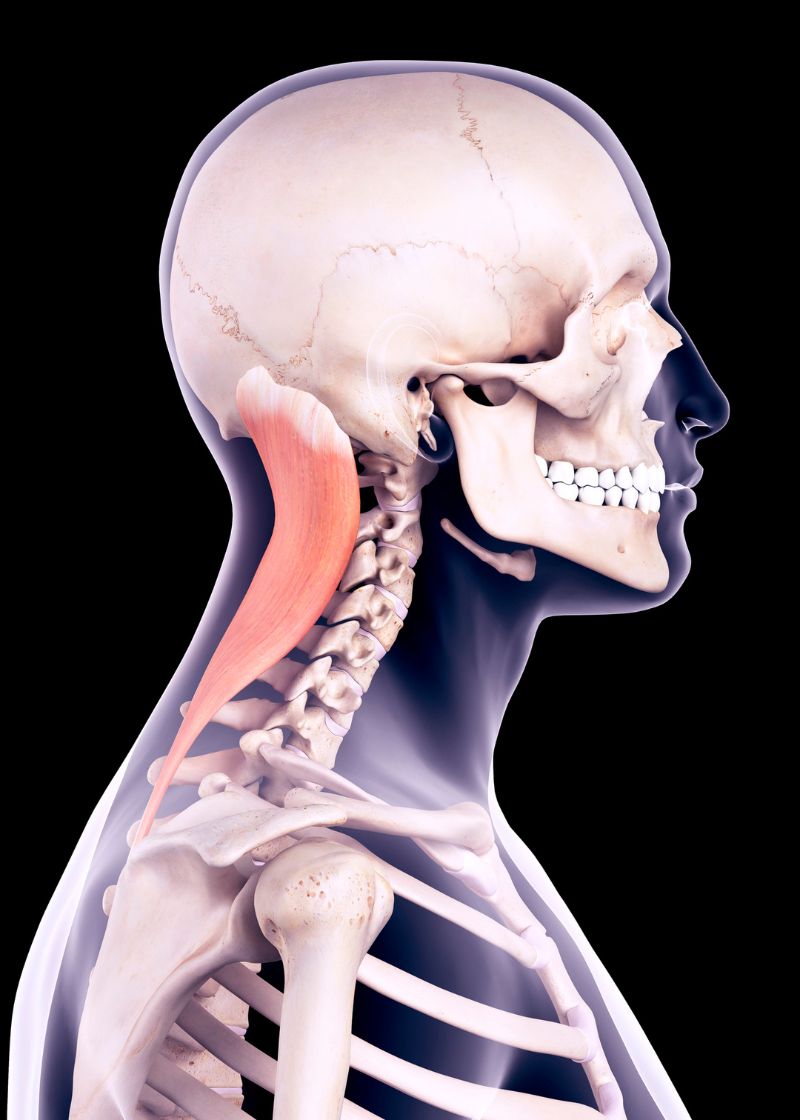
Splenius Capitis
A helpful look at PNF stretches for the neck.
After loosening, lengthening, and strengthening the neck muscles, joint mobilization exercises will be easier. A therapist or a partner can assist you with targeted joint range of motion exercises, and/or you can practice them on your own at home once you have the perfect form down.
The most effective joint range of motion exercises for the neck.
Breathing Exercises for Improved Respiration
If your neck pain has already caused or heightened any breathing difficulties, be sure to add therapeutic breathing exercises to your daily health routine. Two of the most commonly used exercises for increasing lung capacity include diaphragmatic breathing and pursed lip breathing.
Also known as belly breathing or abdominal breathing, diaphragmatic breathing involves relaxed contracting of the muscle between your thoracic and abdominal cavities. The exercise can be performed either sitting up or lying down, just so long as the body is relaxed. The rest of the steps are as follows:
- Place one hand on the belly and one hand to the chest
- Inhale through the nose for two seconds
- Breathe out for two seconds through pursed lips
- Repeat the pattern for 5-10 minutes, 3-4 times per day
Pursed lip breathing can slow your breathing and keep the airways open for a longer period of time. Similar to diaphragmatic breathing, here are the steps:
- Inhale slowly through the nostrils
- Purse your lips
- Keeping the lips pursed, exhale as slowly as possible
- Repeat the pattern for 5-10 minutes, 3-4 times per day
Now You Know!
Keep your cervical spine and respiratory health in balance with bodywork and breathing exercises. Schedule a massage with one of our talented massage therapists today!

Katrina Jenkins
Author, Licensed Massage Therapist
Katrina Jenkins graduated from Towson University in 2013 with a Bachelor’s Degree in Health Science and worked as a nurse’s aide briefly before pursuing her true passion. She graduated from the Massage Therapy Institute of Colorado in April 2016 with honors and completed the Touch of Healers Scholarship Program the following summer. She has been a part of the Moyer Total Wellness Team since the summer of 2017.
Resources
Gerhard Whitworth, RN (2017). Breathing Exercises to Increase Lung Capacity. [online] Healthline. Available at: https://www.healthline.com/health/how-to-increase-lung-capacity.
Kahlaee, A.H., Ghamkhar, L. and Arab, A.M. (2017). The Association Between Neck Pain and Pulmonary Function: A Systematic Review. American Journal of Physical Medicine & Rehabilitation, [online] 96(3), pp.203–210. doi:https://doi.org/10.1097/PHM.0000000000000608.
Marks, J. (2022). Sinuses and Neck Pain: Is There a Connection Between Them? [online] Healthline. Available at: https://www.healthline.com/health/sinus-neck-pain [Accessed 27 Apr. 2023].
Nair, S.P., Panchabhai, C.S. and Panhale, V. (2022). Chronic neck pain and respiratory dysfunction: a review paper. Bulletin of Faculty of Physical Therapy, 27(1). doi:https://doi.org/10.1186/s43161-022-00078-8.
Physiopedia. (n.d.). Neck Pain and Breathing Pattern Disorders. [online] Available at: https://www.physio-pedia.com/Neck_Pain_and_Breathing_Pattern_Disorders.
Photo Credit
Canva by PBXStudio
Canva by Science Photo Library
Canva by rustycloud
Canva by Science Photo Library
Canva by Science Photo Library
Canva by Science Photo Library

